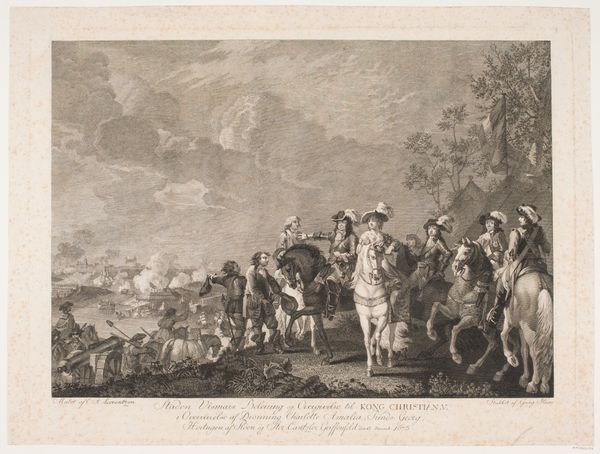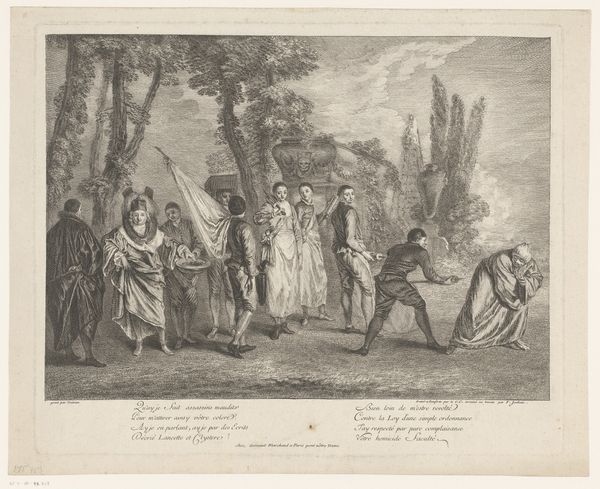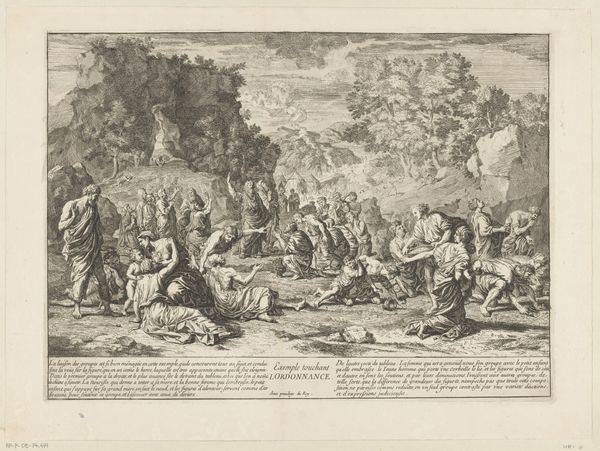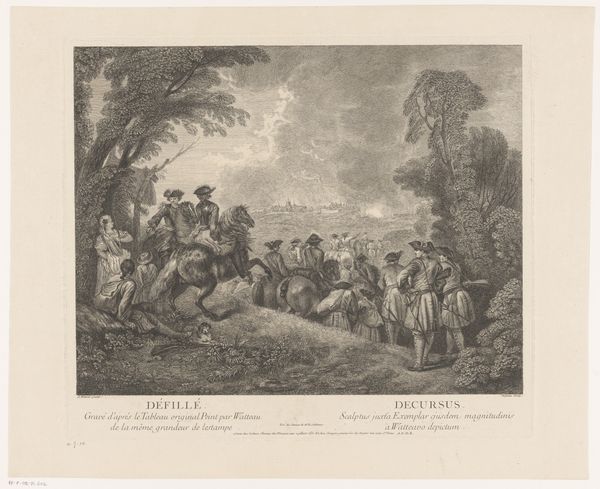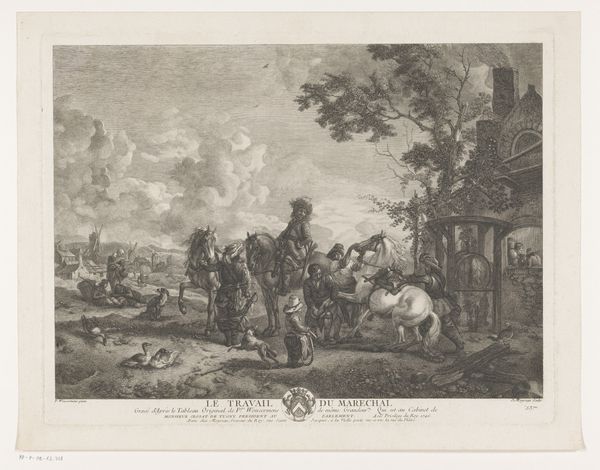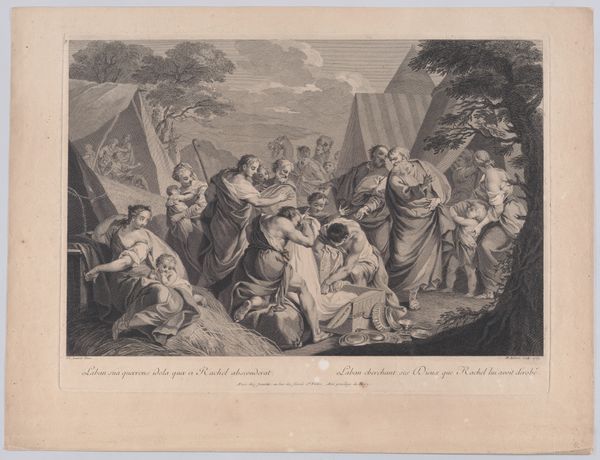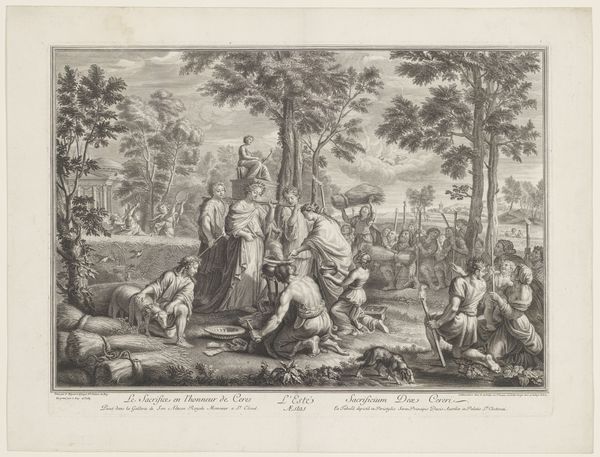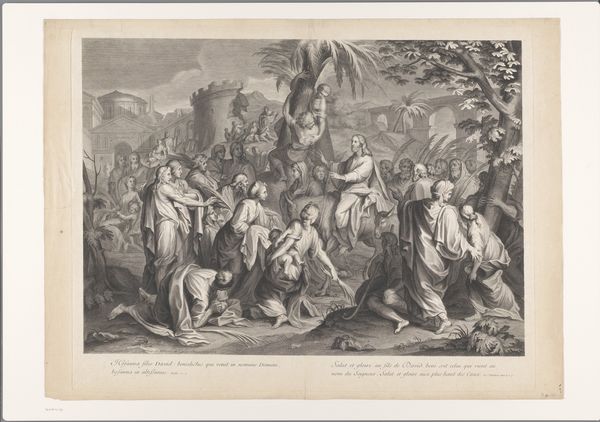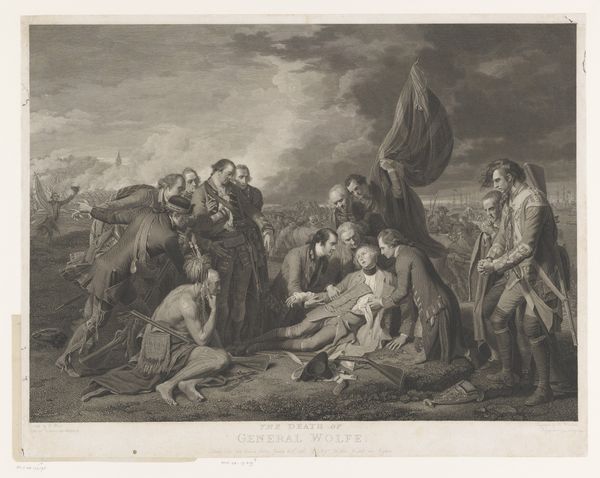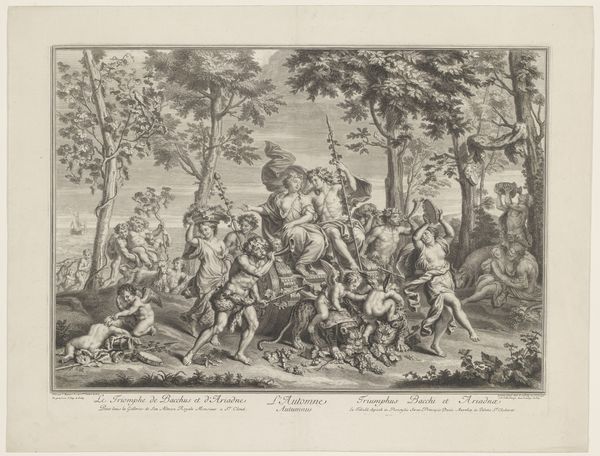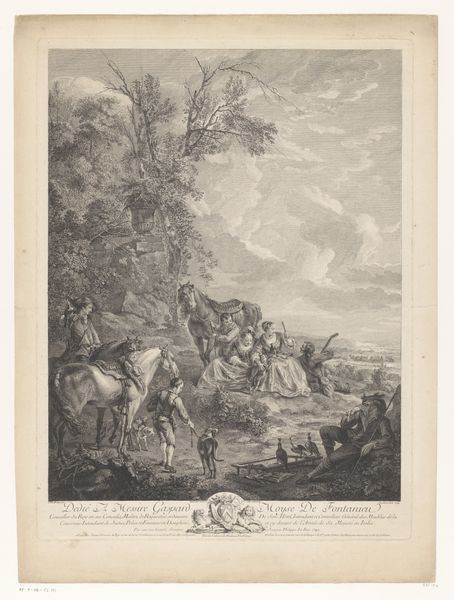
Kong Valdemar II's navnkundige slag ved staden Wolmar i Letland, 1219 1810 - 1816
0:00
0:00
print, engraving
#
medieval
# print
#
landscape
#
figuration
#
line
#
history-painting
#
engraving
Dimensions: 405 mm (height) x 507 mm (width) (plademaal)
Curator: This engraving, "Kong Valdemar II's navnkundige slag ved staden Wolmar i Letland, 1219" by Georg Haas, dating from 1810-1816, depicts a historical battle scene. It's intriguing how Haas chose engraving, a relatively reproducible medium, to depict a specific, arguably unique, moment in history. Editor: It feels very detailed for an engraving. The chaos of the battle, juxtaposed with the figures in the foreground, is compelling. What strikes you when you consider it? Curator: Well, let's consider the labor involved. Each line etched by hand, meticulously recreating the scene. What does it mean to use such a painstaking process to disseminate a historical narrative, particularly one centered on Danish power? The print medium suggests a desire for wider circulation. Editor: So, you're saying the choice of print, rather than say a painting only one person could own, has something to do with wanting this idea of Danish power to reach more people? Curator: Precisely! Think about who had access to prints at that time. Who was consuming this image and internalizing its message? The material reality of the print – the paper, the ink, the labor – becomes intertwined with the ideology it conveys. What's being bought and sold here, literally and figuratively? Editor: It’s fascinating to consider the political and social context in which this image was made and distributed. I never thought about an engraving carrying so much… weight. Curator: Indeed. It pushes us to look beyond the surface narrative and delve into the material conditions of its creation and consumption. Art isn't just about aesthetics, it's deeply connected to labor, power, and social structures. Editor: Right, understanding how it was made and who it was for makes a big difference in how you look at the final piece. Thanks for broadening my perspective!
Comments
No comments
Be the first to comment and join the conversation on the ultimate creative platform.
